In the hidden corners of the forest, a magical spectacle unfolds as darkness descends. Here, among the shadows and leafy undergrowth, nature reveals one of its most enchanting secrets – bioluminescent fungi. These ethereal organisms, capable of producing their own light, create a mesmerizing and otherworldly glow that transforms the night into a living canvas of luminescence.
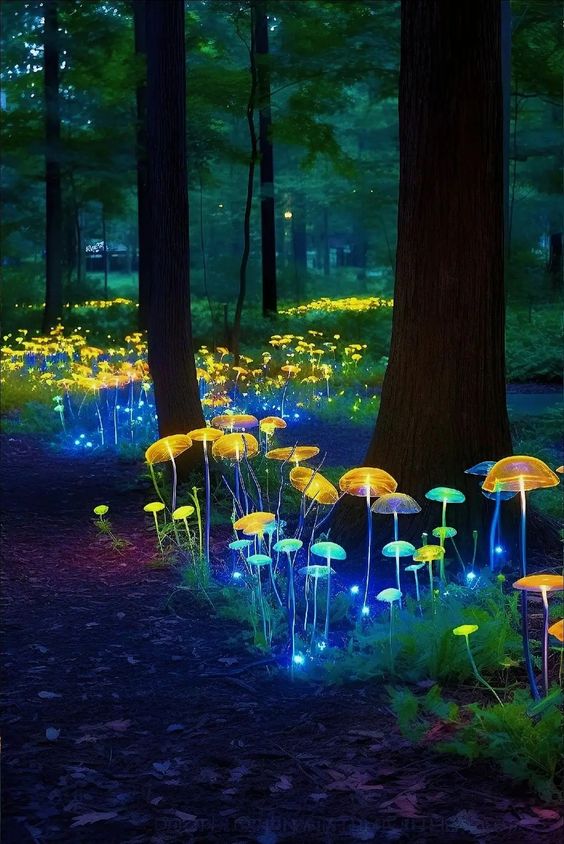
The Science of Illumination:
Bioluminescent fungi, also known as glow-in-the-dark mushrooms, possess a unique ability to produce light through a chemical reaction known as bioluminescence. The process involves the enzyme luciferase catalyzing the oxidation of luciferin, resulting in the emission of light without heat. This phenomenon, rare and captivating, turns the forest floor into a captivating display of natural light.
The Mystique of the Glowing Forest:
As night falls, the forest comes alive with a soft, otherworldly glow emanating from bioluminescent fungi. These luminous mushrooms, often found on decaying wood or in damp environments, add a touch of mystique to their surroundings. The forest, once shrouded in darkness, becomes an enchanted realm where the boundaries between reality and magic blur.
Ecological Significance:
The bioluminescence displayed by these fungi serves a purpose beyond mere visual delight. While the exact ecological role is not fully understood, scientists speculate that the glow may attract insects, aiding in the dispersal of fungal spores. The relationship between bioluminescent fungi and insects, drawn to the light, creates a captivating dance of nature in the moonlit darkness.
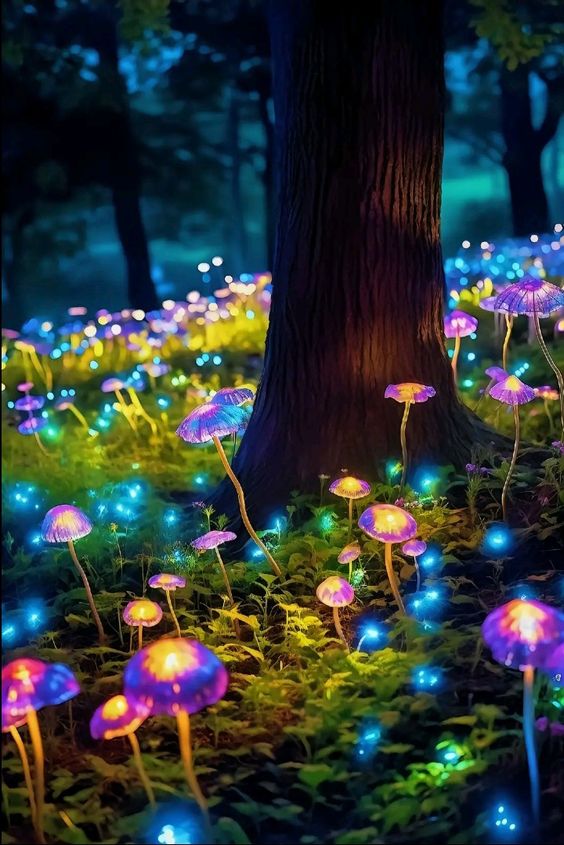
Varieties of Illumination:
Bioluminescent fungi come in various shapes, sizes, and colors, each contributing its own unique glow to the nocturnal landscape. Species like the Mycena chlorophos, commonly known as the “glowing mushroom,” emit an eerie greenish light, while others may display shades of blue or yellow. The diversity of illumination among these fungi adds to the enchantment of the forest night.
Global Presence:
Bioluminescent fungi can be found in various ecosystems around the world, from temperate forests to tropical jungles. Different species thrive in different climates and regions, contributing to the global symphony of nature’s light. Whether in North American woodlands, Asian rainforests, or European meadows, these glowing fungi captivate observers across continents.
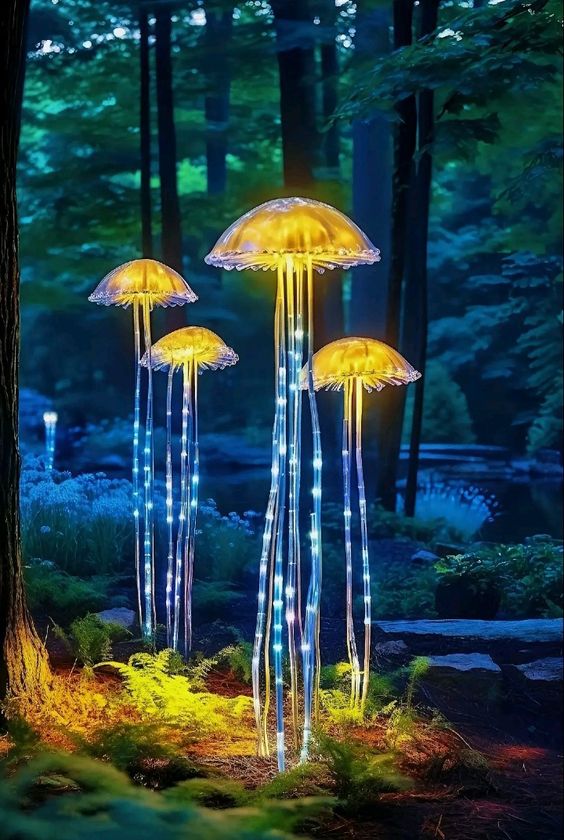
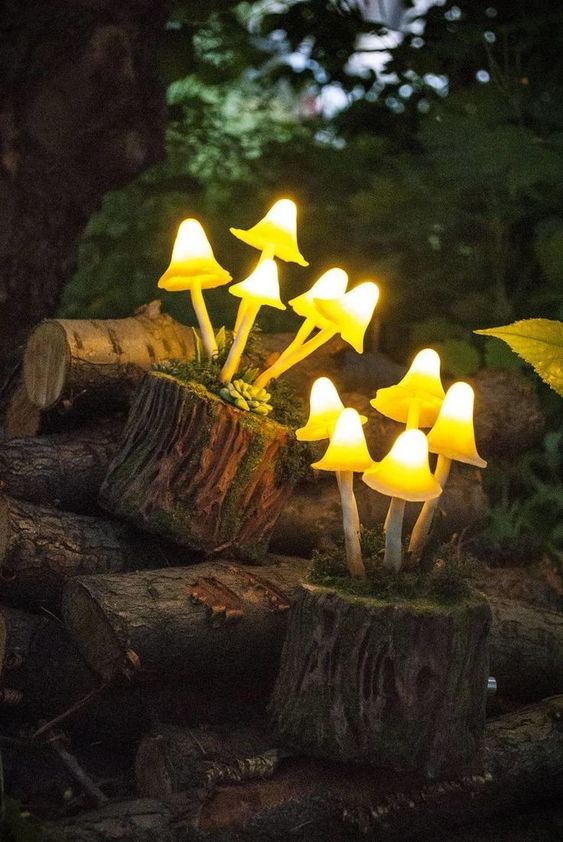
Cultural Fascination:
Throughout history, the phenomenon of bioluminescent fungi has captured the human imagination. In folklore and mythology, these glowing mushrooms are often associated with enchantment and magic. Indigenous cultures may incorporate them into stories, attributing spiritual significance to the ethereal glow that graces the forest floor.
Conservation and Protection:
The delicate balance of ecosystems where bioluminescent fungi thrive highlights the importance of conservation efforts. Habitat preservation, sustainable forestry practices, and responsible tourism play crucial roles in safeguarding the environments where these enchanting organisms flourish.
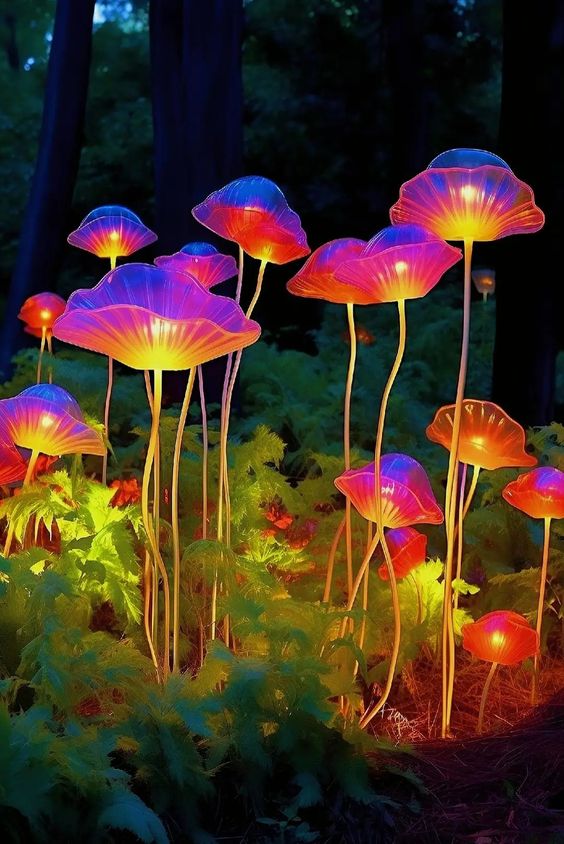
Bioluminescent fungi, with their soft glow illuminating the night, invite us to witness the magic hidden within the natural world. As we explore the forest at night, captivated by the luminescent dance of these enchanting mushrooms, we are reminded of the wonders that unfold when we take a closer look at the intricate and fascinating tapestry of life on Earth.





